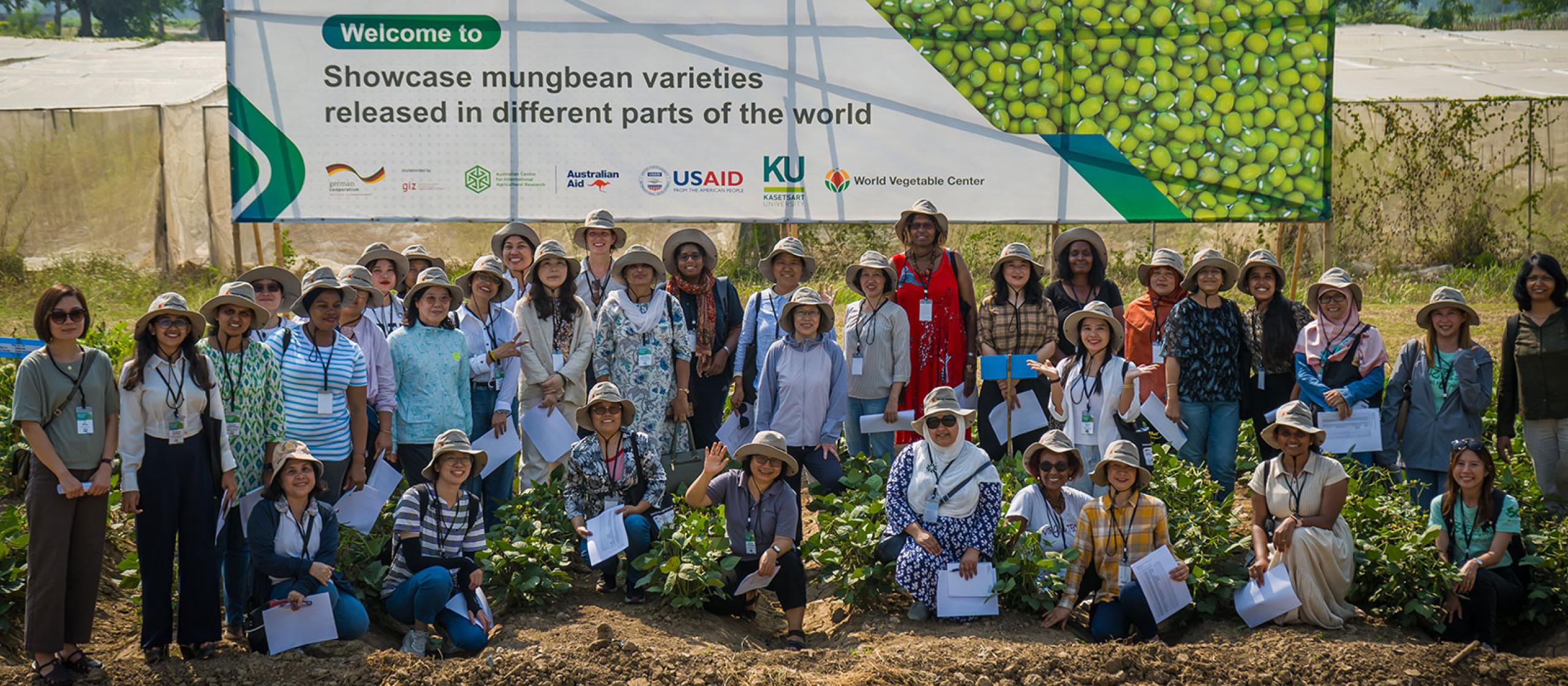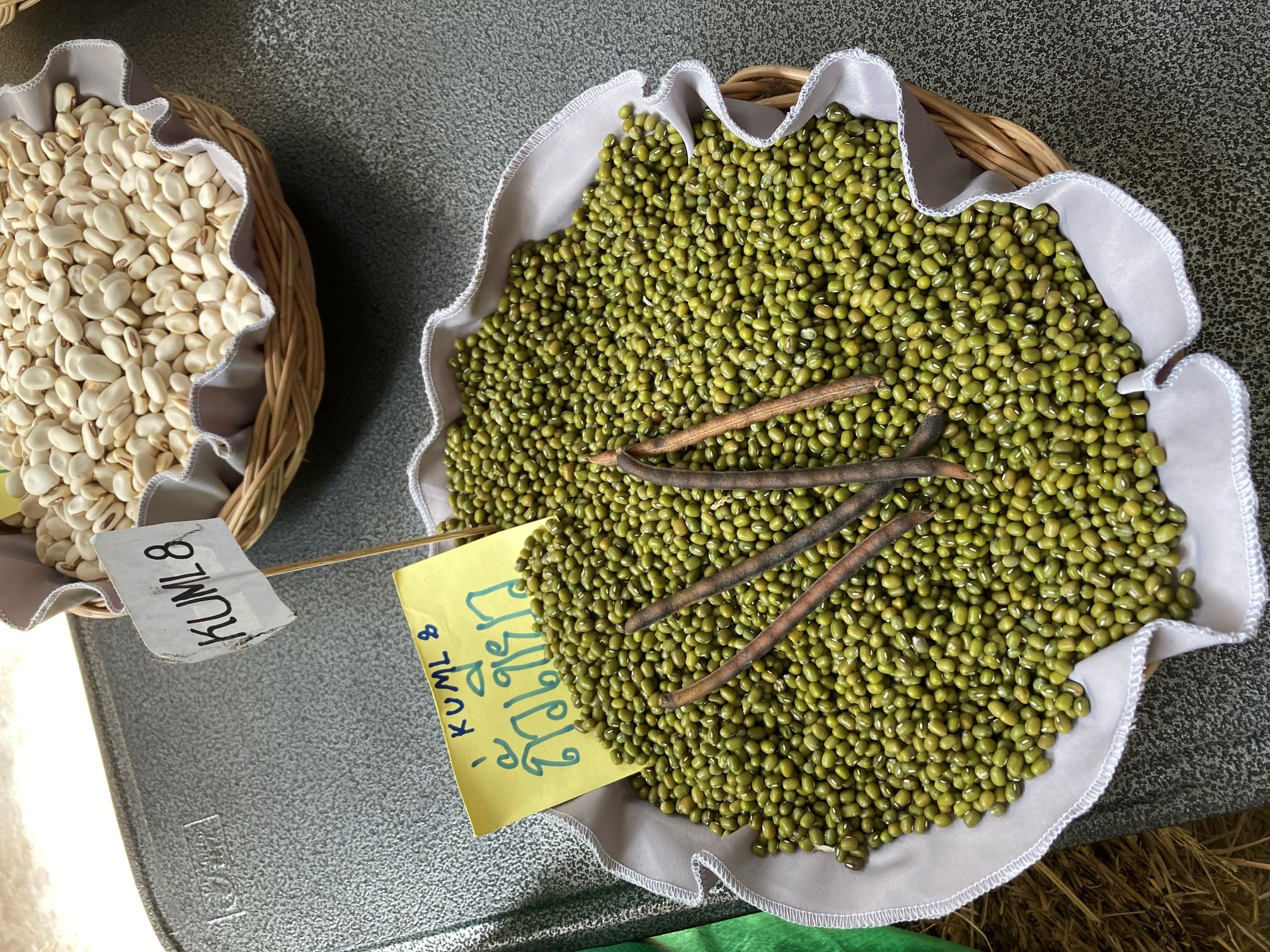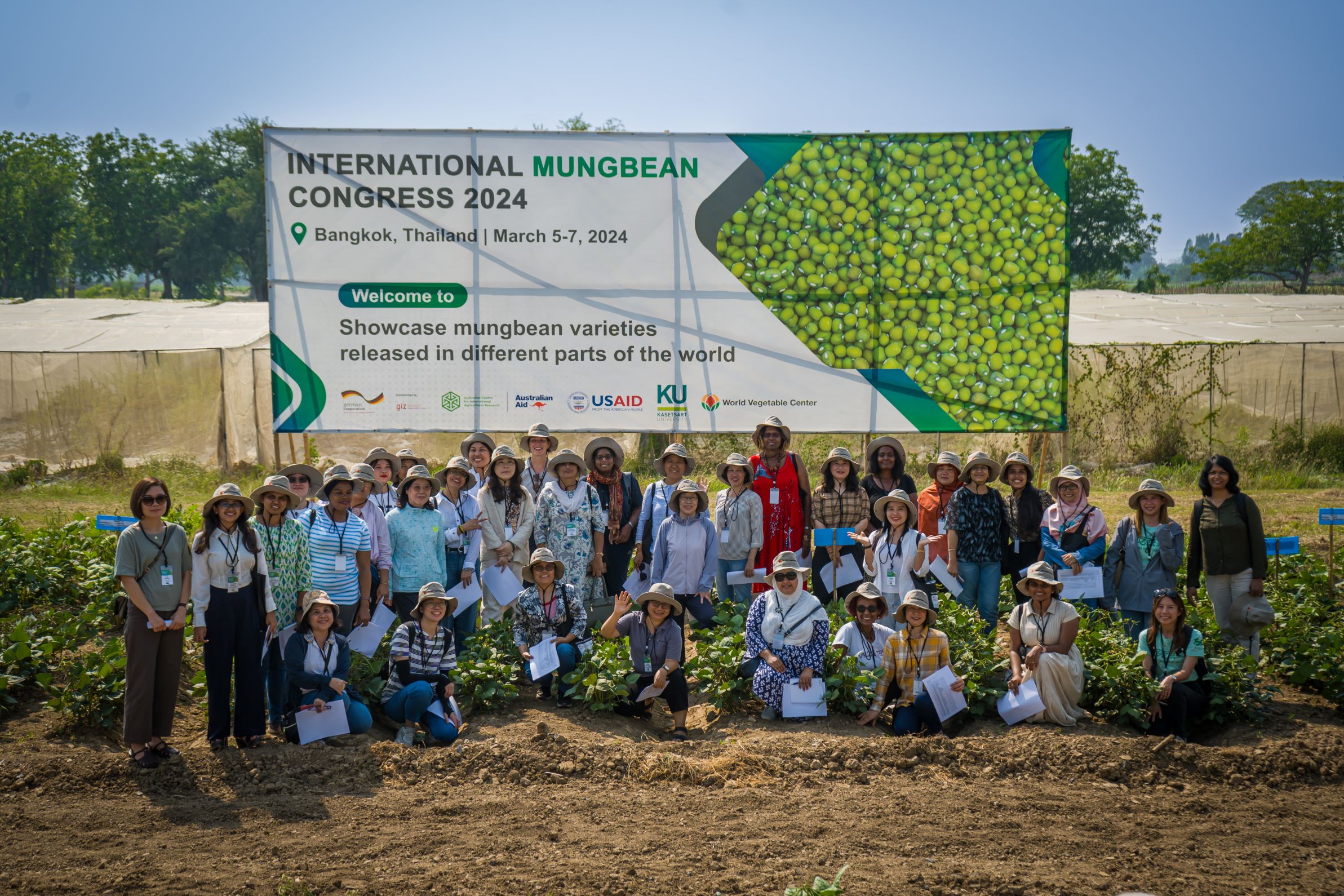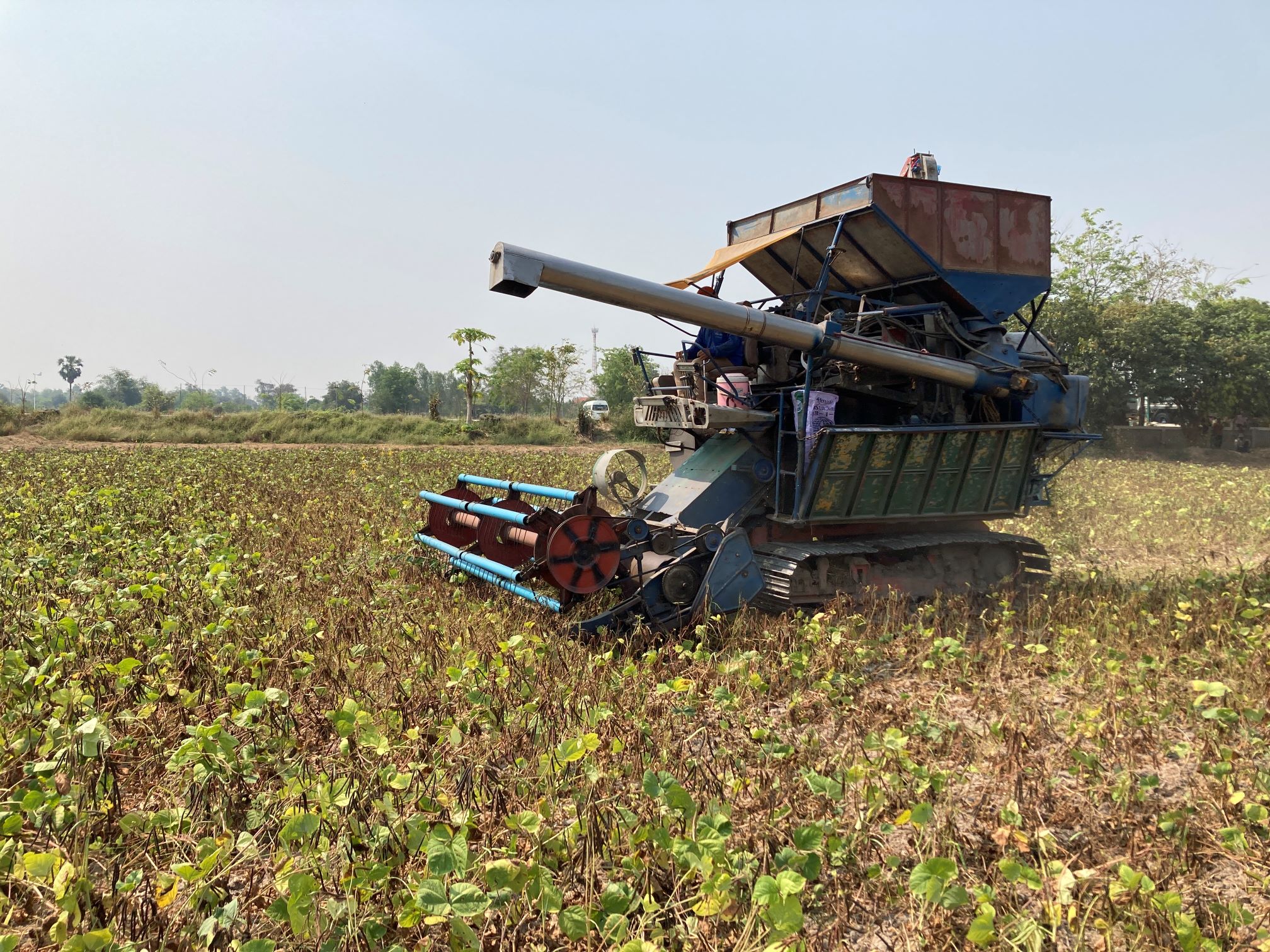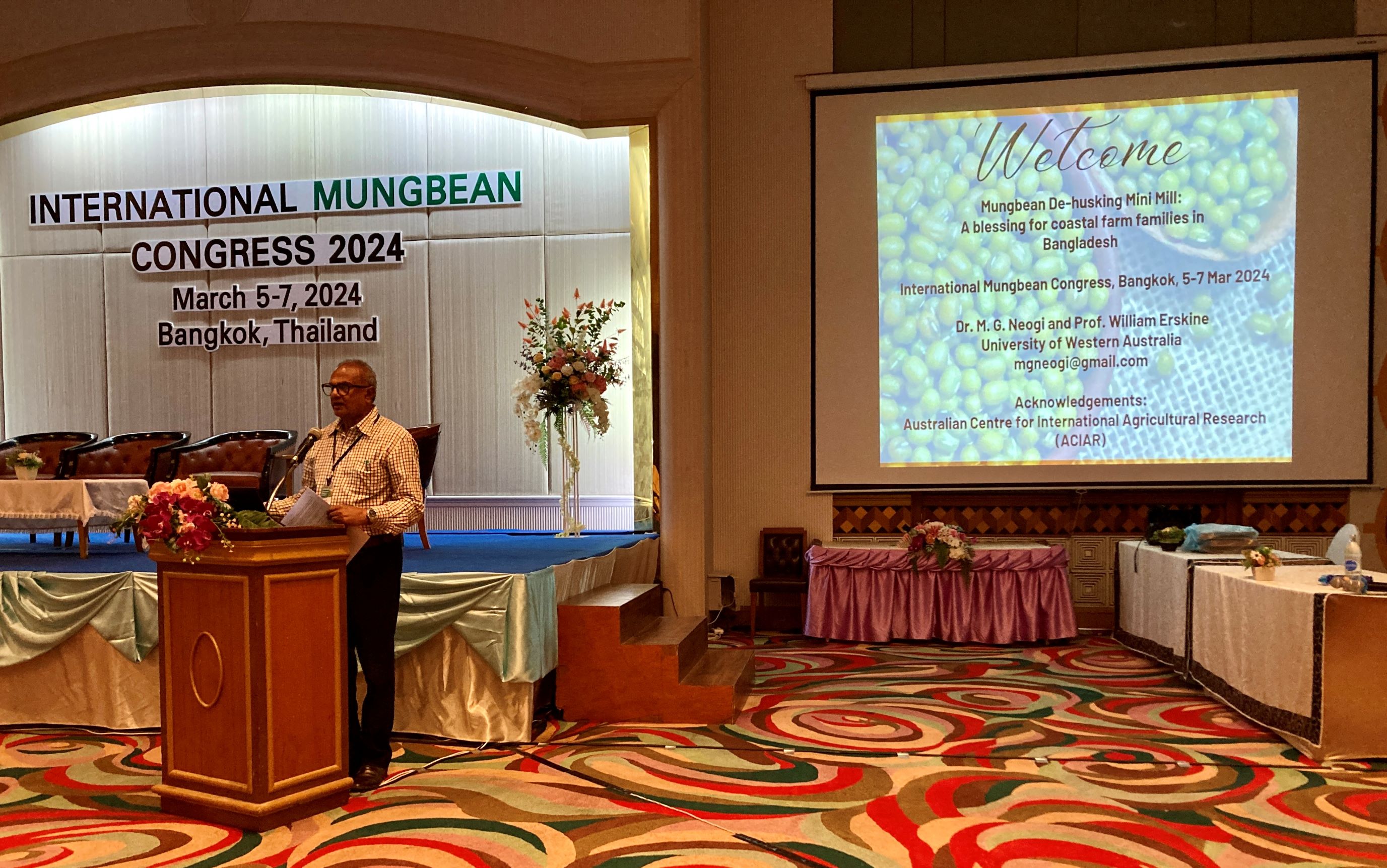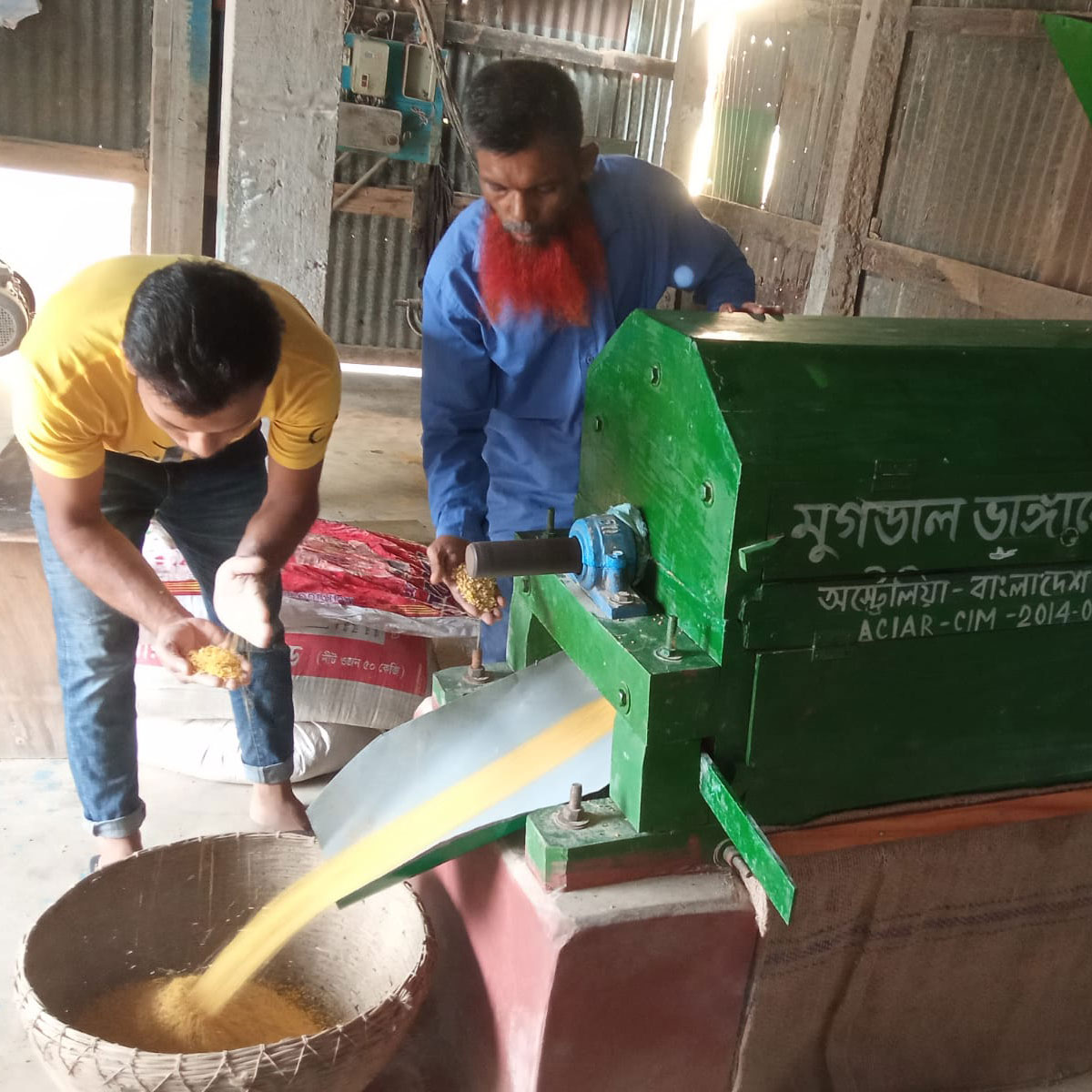The 2024 International Mungbean Congress brought together 110 mungbean industry stakeholders from 23 countries to share current research and discuss research priorities for the future, including research supported by ACIAR.
Dr Eric Huttner, ACIAR Research Program Manager, Crops, said the ACIAR investment in mungbean improvement research has the potential for large impacts in partner countries.
ACIAR has invested in genetic improvement by supporting the International Mungbean Improvement Network, as well as projects to intensify cropping systems in various partner countries.
‘The grain is valuable, both economically and as a source of nutrients. And due to limited investment in mungbean research previously, we have the potential to make positive impacts quite quickly,’ said Dr Huttner.
The congress in Bangkok in March 2024 was the first mungbean-focused gathering of researchers since 1987.
‘The availability of genomic resources, together with multi-location trials of germplasm, is providing new knowledge about mungbean genetics. With increasing capacity of researchers, this will accelerate the breeding of new varieties,’ said Dr Huttner.
